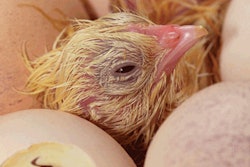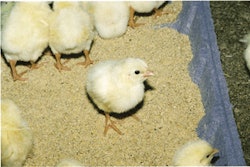Who will ultimately come out on top in the food-versus-fuel battle over corn? Texas Gov. Rick Perry's petition asking U.S. EPA to reduce the Renewable Fuel Standard (RFS) by half was turned down by the EPA. With the RFS left unchanged, who will come out on top?
With ethanol producers receiving a tax credit of $0.51 for every gallon they blend, which is worth around $1.40 for every bushel of corn they purchase, the conventional wisdom says ethanol producers have the upper hand over producers of poultry and other foods. But Dr. Thomas Elam, president of FarmEcon, LLC, an industry economist, has challenged this assumption, saying that poultry can eventually pay more for corn than ethanol producers.
A report on Elam's presentation at the National Chicken Council's Chicken Marketing Seminar, in Hilton Head, S.C., appeared on www.wattpoultry.com. At the seminar, Elam told the audience, "The real food-versus-fuel battle is just starting." He explained that chicken producers can eventually pay more for corn than ethanol producers because the industry can shrink and prices will rise to cover higher costs. The prices that ethanol producers can command will be limited by oil prices, which may eventually come down.
This makes sense, but after the meeting, I asked Elam about the impact of the RFS on the price that the blenders will be willing to pay for ethanol. Won't blenders be forced to buy enough ethanol to satisfy the RFS even if ethanol costs more per gallon than gasoline? If this is the case than couldn't ethanol producers compete successfully with poultry producers for corn, at least until the RFS quantity of ethanol had been blended into gasoline? Elam said, "You would think so, but there is a lot of flexibility built into the RFS." Just as the EPA administrator has the power to reduce the RFS because of its impact on corn prices, blenders face very few penalties if they don't blend the RFS amount of ethanol into gasoline if ethanol prices are higher than gasoline prices. So with grain prices at high levels, the RFS mandated amounts of ethanol might not be produced, or corn ethanol might be replaced by imported ethanol derived from sugar cane, even with the import tariffs in place.
Elam said that poultry firms are in a cost-price squeeze, for now, and so are ethanol producers. With ending global grain stocks trending down since 2001, it is clear that demand is growing faster than production. Corn acres won't increase in 2008-09, after increased 2007-08 corn acreage caused a doubling of soybean meal prices, holding more acres in soybeans. What's more, spring floods in the U.S. grain belt will hamper this year's corn and soy production.
Potential ethanol demand for corn is around 3.33 billion bushels in calendar year 2008, Elam estimates, and will grow to 3.75-3.9 billion next year. This will set up a historic food-versus-fuel collision. With the number of bushels available for feed at a 20-year low, 2008-09 corn prices in will range between $6 and $8 a bushel, he projects.
The new economic reality facing poultry producers, he said, is this: "We cannot produce enough corn to depress the price significantly below the level set by the value of corn to ethanol producers. If corn prices drop, ethanol producers will expand until the corn price increases enough to make further expansion unprofitable."
Costs to produce poultry will never go back to 2006 levels Elam predicts, and higher costs will be passed to consumers. Broilers, however, are cost-efficient converters of feed and chicken will remain America's top meat protein. The industry's share of total meat production, in fact, may grow. The downside is that the transition to a smaller poultry industry will be economically painful.


















